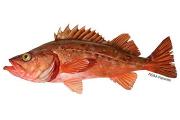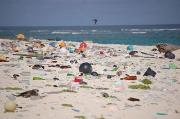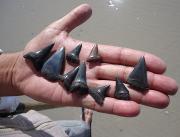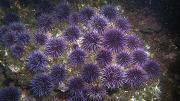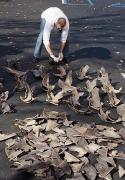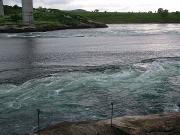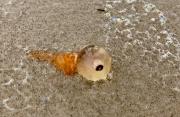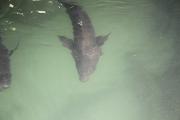Radio Program
Our regular Science and the SeaTM radio program presents marine science topics in an engaging two-minute story format. Our script writers gather ideas for the radio program from the University of Texas Marine Science Institute's researchers and from our very popular college class, Introduction to Oceanography, which we teach to hundreds of non-science majors at The University of Texas at Austin every year. Our radio programs are distributed at to commercial and public radio stations across the country.
You can learn a lot about people by eavesdropping on their conversations: where they’ve been, where they’re going, what they’re thinking. And the same thing applies to fish. Listening to their conversations can reveal when they’re busiest, how they move around during the day and the year, when it’s mating season, and much more.
The world’s oceans just keep getting more polluted. That’s not good for anything living in them or near them -- including people. In fact, ocean pollution may cause millions of premature deaths every year.
A recent study looked at hundreds of smaller studies done over the last few years. It put them together to provide a look at conditions around the globe. It found that pollution is widely spread, and it’s getting worse.
It’s a case fit for Sherlock Holmes: the case of the disappearing sharks. Almost 20 million years ago, about 90 percent of all sharks, and 70 percent of shark species, disappeared from the open ocean.
Scientists reached that conclusion by studying sediments from two locations in the Pacific Ocean. One was in the north Pacific and the other in the south.
The sediments were in core samples -- long tubes pushed into the sea floor. The tubes filled with sediments from up to 50 feet below the sea floor. Scientists used various techniques to date the different layers in the cores.
A heat wave a few years ago off California’s Monterey Peninsula presented sea otters with a smorgasbord: an eruption of one of their favorite foods, sea urchins. And the otters have taken advantage. But they don’t appear to like all the urchins. Instead, they pick the most choice ones. And that’s left a patchwork of kelp beds where there used to be a continuous forest.
It’s illegal to own or transport many types of marine life. That’s usually either because a species is endangered, or because it could cause problems if it’s introduced into a new region. But it’s also illegal to own or transport even pieces of many species.
It’s illegal to own any piece of a marine mammal, such as a walrus tusk, for example. It’s also illegal to own any part of a sea turtle, including jewelry made from the turtle shells. The only exceptions are for pieces gathered before the laws went into effect, or for some native crafts.
Blue whales are hidden giants. They’re the largest animals on the planet. But they’re shy, and they inhabit some of the most remote locations on the planet, so they’re hard to spot. Yet researchers recently found a new group of them. They didn’t actually see any of the whales. Instead, they heard their “songs” in recordings made over the last couple of decades. They sped up the recordings to make the calls easier to hear.
Each population of blue whales produces its own unique songs. The songs can travel hundreds of miles.
Every six hours or so, there’s a watery traffic jam in a narrow channel that connects two fjords in Norway. As the water piles up, it creates powerful currents and some impressive whirlpools.
Saltstraumen Maelstrom is one of the most powerful tidal currents in the world. It takes place in a channel that separates two bits of land. The channel is a couple of miles long, but only about 500 feet wide. And that’s why things get jammed up.
Keeping a close eye and a firm hand on fish stocks seems to keep them in pretty good shape. On the other hand, not keeping an eye on them, and letting fishing fleets do as they wish, doesn’t work out so well.
Lots of stories these days talk about how fish stocks are declining around the world. And in many cases, that’s certainly true. And it was true for many other cases until the last couple of decades.
You never know what you might find on the beach. The variety of plants, animals, and objects just keeps growing. In part, that’s because of our changing climate. As the oceans get warmer, new critters turn up on beaches where they’ve never been seen before.
One recent newcomer was an odd creature that washed ashore on Mustang Island in Texas, near Corpus Christi. Beachgoers reported seeing several of them. They looked like a miniature version of something from an old sci-fi flick: the crawling eye.
One of the most expensive commodities on Earth is the swim bladder of a large fish found in the Gulf of California. It’s a delicacy in China, where it’s thought to heal arthritis and other ailments. A single bladder can fetch thousands of dollars. Don’t try finding one, though. The fish is endangered, so it’s illegal to catch, sell, or even have one.
The totoaba is in the family of drums and croakers. In fact, it’s the largest of all drum species. An adult can be six feet long and weigh more than 200 pounds.

